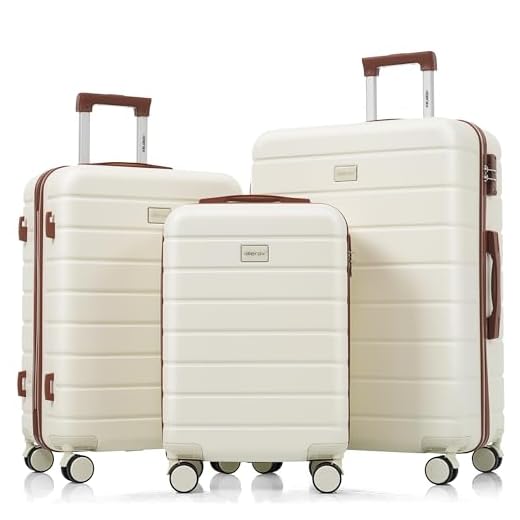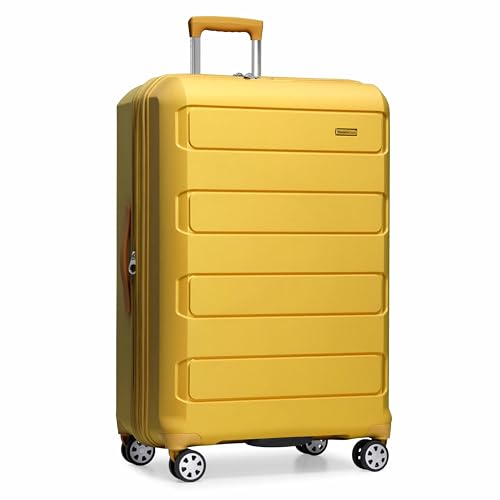





Prioritize thorough examination methods to ensure durability and reliability in your travel essentials. This article provides insights into effective practices for assessing the integrity of your travel gear, from robust suitcases to versatile backpacks.
Targeted at manufacturers, retailers, and discerning consumers, the information presented here will enhance your understanding of what constitutes a well-made product. By applying these inspection techniques, you can avoid common pitfalls and invest in items that stand the test of time.
In this piece, you will discover key aspects of material evaluation, construction details, and performance testing. We will also highlight the significance of supplier certifications and industry standards that can guide your choices. Equip yourself with the knowledge to make informed decisions and elevate your travel experience.
Best Luggage and Bags Quality Control Inspection
Implementing rigorous examination procedures is fundamental for ensuring the durability and reliability of travel gear. Each piece should undergo a series of tests to confirm that it meets predefined standards before reaching consumers.
Focus on several critical aspects during the evaluation process. Material integrity, stitching strength, zipper functionality, and overall design should all be assessed meticulously. Each component plays a significant role in the product’s longevity and performance.
Key Inspection Areas
- Materials: Verify that the fabrics are tear-resistant and waterproof where necessary.
- Stitching: Inspect seams for consistency and strength; double stitching is preferable for high-stress areas.
- Zippers: Test for smooth operation and resistance to snagging.
- Weight Distribution: Ensure that the design allows for even weight distribution to enhance user comfort.
- Accessories: Check that wheels, handles, and straps are securely attached and function properly.
Utilizing a combination of automated and manual assessments can improve the accuracy of evaluations. Automated systems can quickly identify defects in materials, while trained personnel can evaluate craftsmanship and usability.
Documentation of inspection results is equally essential. Keeping detailed records assists in tracking issues over time and provides valuable insights for future design improvements.
- Conduct initial assessments during production to catch defects early.
- Implement random sampling for finished products to ensure ongoing compliance.
- Gather feedback from consumers to identify areas for enhancement.
Establishing a feedback loop between production, inspection, and end-users can significantly contribute to the enhancement of product quality. Continuous improvement efforts will lead to greater customer satisfaction and brand loyalty.
Essential Standards for Luggage Quality Assessment
Conducting a thorough evaluation of travel gear requires adherence to specific benchmarks that ensure durability and functionality. Key aspects include material integrity, stitching precision, and the performance of zippers and clasps.
Materials should be robust and resistant to wear. Common choices are ballistic nylon, polyester, and polycarbonate. Each material offers distinct advantages, such as water resistance or lightweight properties, impacting the overall performance.
Critical Evaluation Areas
- Durability: Assess the resilience of fabrics and components under stress.
- Stitching: Inspect seams for tightness and uniformity to prevent fraying.
- Hardware: Evaluate the strength and functionality of zippers, locks, and handles.
- Weight: Consider the overall weight for ease of transport without compromising sturdiness.
- Functionality: Examine compartments and organizational features for user convenience.
Testing should include simulated travel conditions to identify potential weaknesses. This can involve exposure to moisture, varying temperatures, and physical impacts.
Ultimately, a reliable assessment framework enables manufacturers to deliver high-quality products that meet consumer expectations. Consistent evaluation against established standards can significantly enhance customer satisfaction.
Key Inspection Techniques for Durable Bag Materials
Conducting thorough assessments of materials used in travel accessories is paramount for ensuring longevity and reliability. One effective approach is to implement a series of tests that evaluate fabric integrity, stitching strength, and zipper functionality.
Visual examinations should be complemented by tactile assessments. Inspectors should feel for texture uniformity and check for any irregularities or inconsistencies in the fabric weave. A close look at seams reveals much about durability, as poorly stitched areas can lead to premature failure.
Material Testing Methods
Several techniques can be employed to test the resilience of materials:
- Tensile Strength Test: This evaluates how much force a material can withstand before breaking, allowing for an understanding of its load-bearing capacity.
- Water Resistance Test: Assessing how materials repel water can be crucial for items exposed to moisture. This can be done by applying water droplets and observing absorption rates.
- Colorfastness Test: Exposure to sunlight or washing may alter a material’s color. Testing for color retention ensures that the product maintains its appearance over time.
- Flexing Test: Repeated bending of materials helps determine how they respond to frequent use, identifying potential wear points.
Additionally, inspecting hardware components such as buckles, zippers, and straps is vital. These elements should be tested for ease of use and resistance to breakage under stress.
Final Quality Assessment
After conducting various evaluations, a comprehensive review should be performed to confirm that all aspects meet established standards. Implementing these techniques will significantly enhance the durability and overall performance of travel goods.
Critical Factors in Luggage Functionality Testing
Assessing the performance of travel carriers involves several key elements that directly influence their usability and longevity. Rigorous testing ensures that each component meets necessary standards, which contributes to overall satisfaction for users.
One significant aspect is the durability of materials used in construction. High-quality fabrics and zippers must withstand wear and tear, especially under varying environmental conditions. Testing should include exposure to extreme temperatures, moisture, and abrasion to evaluate material resilience.
Key Testing Areas
- Weight Capacity: Each unit should be tested for its ability to hold the specified weight without compromising structure or functionality.
- Mobility: Wheels and handles should undergo stress tests to ensure smooth operation and ease of movement over different surfaces.
- Closure Systems: The effectiveness of zippers, clasps, and other fastening mechanisms must be verified to prevent accidental openings during transit.
- Water Resistance: Conduct tests to determine how well the materials repel water and keep the contents dry in rainy conditions.
Additionally, user feedback plays a crucial role in functionality assessments. Gathering insights from individuals who regularly use these carriers can highlight real-world performance issues that may not emerge during controlled testing.
Incorporating these factors into the evaluation process can enhance the reliability and user experience of travel containers, ultimately leading to more satisfied customers.
Best Practices for Ensuring Quality in Bag Manufacturing
Establishing a robust framework for monitoring standards at every stage of production is critical. Implementing detailed checklists for raw materials, assembly, and finishing processes will ensure adherence to specifications.
Regular training of personnel on quality requirements and expectations enhances awareness and reduces the likelihood of defects. Incorporating a culture of accountability among staff is also essential for maintaining high standards.
Conclusion
To achieve excellence in the production of travel accessories, manufacturers should prioritize the following strategies:
- Supplier Evaluation: Conduct thorough assessments of suppliers to ensure they meet material standards.
- Process Mapping: Utilize flowcharts to visualize each step of production, identifying potential failure points.
- Random Sampling: Implement random sampling techniques during production to catch defects early.
- Feedback Mechanisms: Create channels for customer feedback to inform improvements and adjustments.
- Compliance Audits: Schedule regular audits for compliance with industry standards and regulations.
By integrating these approaches, manufacturers can significantly enhance the durability and functionality of their products, leading to greater customer satisfaction and loyalty.
Best luggage and bags quality control inspection
Features
| Part Number | TC09157Y30 |
| Model | TC09157Y30 |
| Color | Yellow |
| Size | 30-Inch Large |
Features
| Part Number | YK-N726P296022O |
| Model | YK-N726P296022O |
| Color | Ivory + ABS |
| Size | 20/24/28 Inch |
Features
| Warranty | Returns up to 60 days |
| Color | Grey |
Video:
FAQ:
What are the key factors to consider during a quality control inspection for luggage and bags?
Several key factors should be taken into account during a quality control inspection for luggage and bags. First, the material used in the production is critical; it should be durable and resistant to wear and tear. Second, the craftsmanship must be examined, including stitching quality and the integrity of zippers and clasps. Third, functionality is important; bags should meet design specifications and work as intended. Additionally, checking for weight distribution and balance can affect usability. Finally, any safety standards or regulations applicable to the products should also be verified to ensure compliance.
How can manufacturers improve their quality control processes for luggage and bags?
Manufacturers can enhance their quality control processes through several strategies. First, implementing standardized testing procedures can help ensure consistency across batches. Training staff on quality expectations and providing feedback can improve craftsmanship. Utilizing technology such as automated inspection systems can help identify defects early in the production process. Regular audits of both materials and finished products can also ensure adherence to quality standards. Finally, gathering customer feedback post-sale can provide insights into potential areas for improvement in subsequent production runs.







